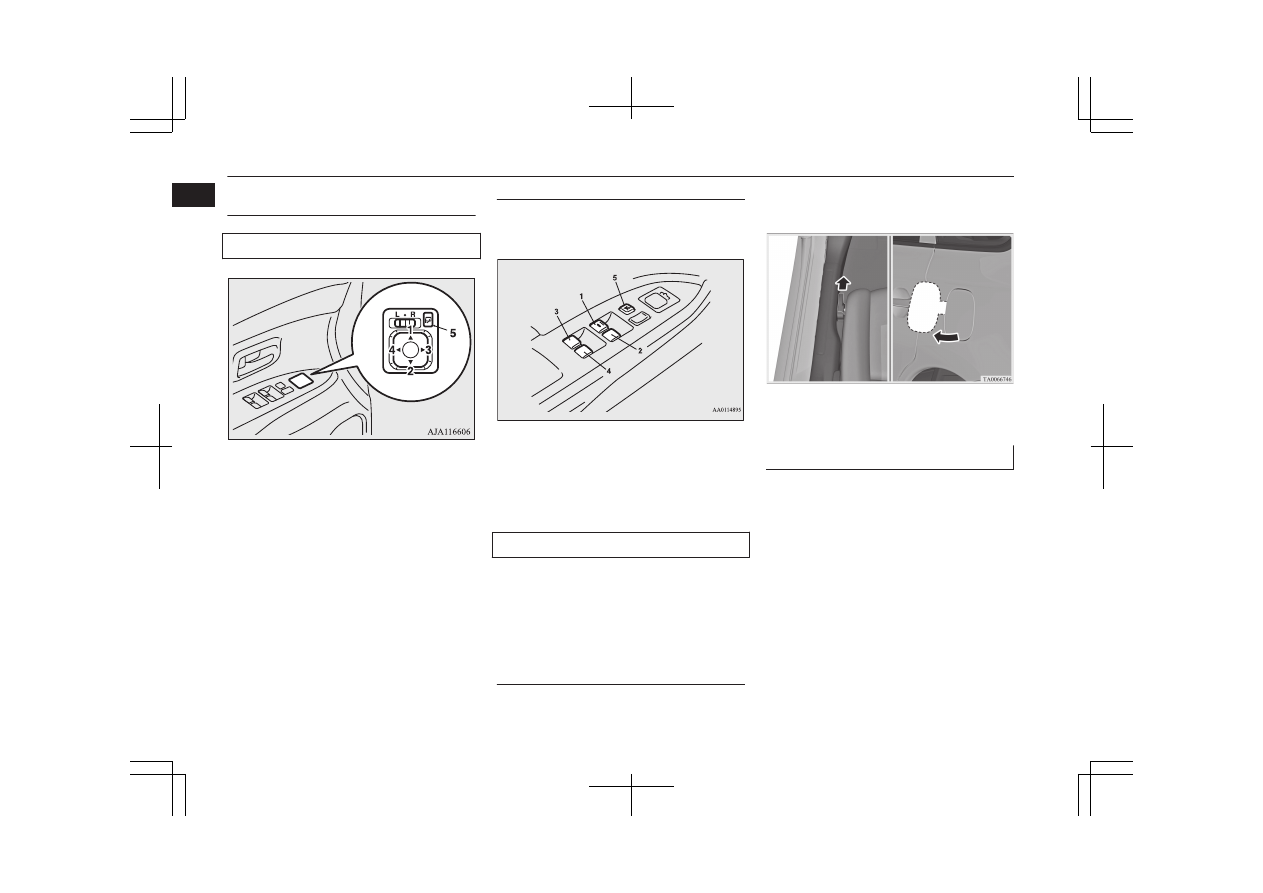Mitsubishi Outlander PHEV (2019 year). Instruction - part 2

5-Electric
remote-controlled
outside rear-view mirrors
To adjust the mirror position
L-
Left outside mirror adjustment
R-
Right outside mirror adjustment
1-
Up
2-
Down
3-
Right
4-
Left
5-
Mirror retractor switch
Refer to “Outside rear-view mirrors” on
page 7-09.
6-Electric window control
Press the switch down for opening the win-
dow, and pull the switch for closing.
1- Driver’s door window
2- Front passenger’s door window
3- Rear left door window
4- Rear right door window
5- Lock switch
Lock switch
If you press the switch (5), the passenger’s
switches cannot be operated. To cancel, press
it once again.
Refer to “Electric window control” on
page 4-34.
7-Fuel tank filler door release
lever
Open the fuel tank filler door.
The fuel tank filler is located on the rear left
side of your vehicle.
Refer to “Filling the fuel tank” on page
2-15.
Charging lid
E08502100023
Firmly apply the parking brake, press the
electrical parking switch to shift into the “P”
(PARK) position and put the operation mode
of the power switch in the “OFF” position.
Quick guide
1-18
OGGE19E1
Overview
1